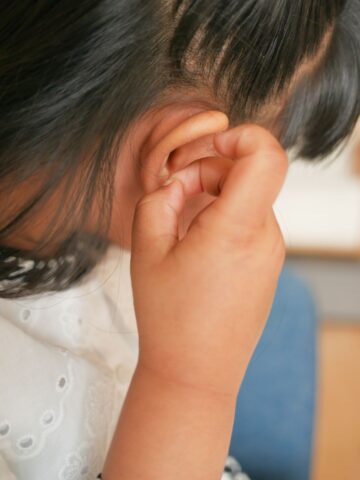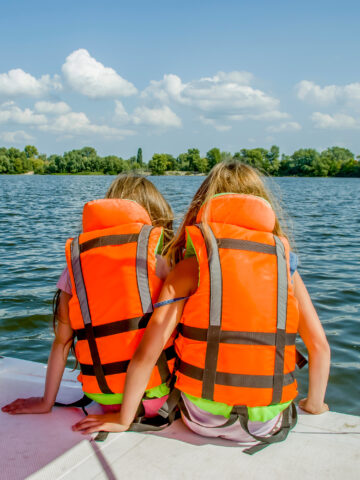Although many think only young children are at risk of drowning, it can happen to anyone.
Of the over 50 patients treated for drowning at CHOC in 2022, 30% of them were children over the age of 6 years. In fact, new breath-holding challenges shared on social media might be putting preteens and teens at an increased risk of fainting and drowning underwater.
Here, Injury Prevention Educator Makenzie Ferguson joins Tamara Codd and Alexandra Abdelsayed, nurses at the Julia and George Argyros Emergency Department at CHOC Hospital in Orange, to offer education and advice to families about these challenges and how to keep their teens and preteens safe.
What is an underwater breath-holding challenge and who may it be affecting?
Preteens and teens, ages 12 to 18 years, may participate in breath-holding challenges they find on social media.
“These challenges may have evolved from breath holding exercises that have been practiced for years within the diving, spearfishing and competitive swimming communities,” says Tamara.
Typically, these exercises are used to train individuals to hold their breath safely and take place in a controlled environment with rescue professionals nearby and available oxygen.
Now, these types of exercises have taken on a new life. There are hundreds of videos shared online teaching others how to hold their breath underwater for extended periods. What’s more, people share videos of themselves holding their breath underwater and influencing others to do so.
Unlike the exercises for professional swimmers, these challenges are not taking place in a controlled environment with necessary precautions – which can put teens at risk for serious injuries or death.
What can happen to teens that hold their breath underwater for too long?
When holding your breath for an extended period is a challenge, says Alex, the likelihood of drowning from fainting is highly likely – known as “hypoxic blackout” or “shallow water blackout.”
During a challenge like this, the teen might take a big breath before going underwater, which means that they will have a lower level of oxygen and carbon dioxide in their body. Then, due to hyperventilation (holding their breath), the rise in carbon dioxide in their bloodstream will trigger an urge to breathe. But if that urge is ignored due to a challenge, they might faint – leading them to try to take a big breath underwater. Then, water can fill their lungs and cause them to drown. This can cause severe injury or death if not resuscitated immediately.
In addition to breath-holding challenges, there have been cases of experienced swimmers experiencing shallow water blackouts from ignoring the urge to breathe while swimming or diving competitively.
How long can teens hold their breath underwater before potentially fainting?
With underwater breath-holding, fainting can occur within two minutes – which can lead to brain damage due to lack of oxygen to the brain or death.
Compared to a drowning scenario that does not involve breath holding, there are about six to eight minutes to rescue the victim before severe brain damage occurs.
What can be done if a parent, guardian or lifeguard sees that a teen has fainted underwater?
This can be tricky, says Makenzie, because the fainting that occurs because of breath holding is very difficult to observe especially if the parent, guardian or lifeguard is not in the water.
But if you notice a fainting episode, alert someone to call 911, immediately pull the child out of the water and initiate rescue breathing. Immediately start chest compressions if you cannot identify a pulse.
How can parents prevent their kids from trying the underwater breath-holding challenge?
“Knowledge is power,” says Tamara.
Talk to your teenagers about staying safe in the water by not participating in these challenges. Educate them on the dangers of this challenge as well as the potential outcomes should they be faced with friends wanting to participate in the challenge. Teach them to never play these breath-holding games and never ignore the urge to breathe while underwater. Don’t let them swim without the supervision of a parent, guardian or lifeguard.
If drowning does occur, starting CPR as early as possible is the best way to save a life. For this reason, parents (and even teens!) should all take a CPR class.
Learn more about CHOC’s free community education classes, including CPR and drowning prevention.
If you don’t reside in Orange County, look for CPR classes from your local community programs and health institutions.
What other drowning prevention efforts can families practice?
Drowning is not limited to infants and small children. Even strong swimmers and older adolescents can drown. Educating your children on the importance of water safety and empowering them to encourage their peers to be smart in and around bodies of water will help prevent future drownings.
Learn more techniques to help prevent drowning from CHOC experts.
Get more expert health advice delivered to your inbox monthly by subscribing to the KidsHealth newsletter here.
Get more safety and injury prevention tips from CHOC experts
More children are affected by injuries than all other childhood illnesses and diseases combined. Most of these injuries are predictable and preventable. Here’s how to keep your child safe.





